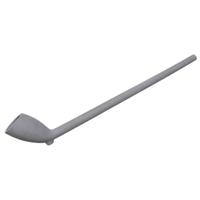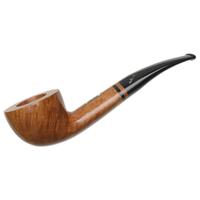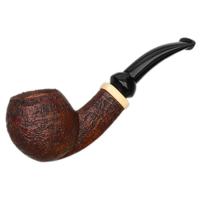anyone try this for storage?
- Thread starter fhb2532
- Start date
You are using an out of date browser. It may not display this or other websites correctly.
You should upgrade or use an alternative browser.
You should upgrade or use an alternative browser.
- Status
- Not open for further replies.
I don't know if a vacuum is the way to go when long term storage is the intent.
For me long term storage means keeping the moisture content stable and allowing the natural aging process to proceed unimpeded. So, by extension air would seem to be a requisite.
For me long term storage means keeping the moisture content stable and allowing the natural aging process to proceed unimpeded. So, by extension air would seem to be a requisite.
I tried it for awhile when I first seriously got into pipe smoking. I didn't like it too much.
First off, the "airtight" bags are not airtight permanently. Over time they start leaking the vacuum and get air into them.
Second, once you open the bag to get some tobacco, you have to re-seal the bag or use a new one. That gets pretty costly.
It is cheaper to buy mason or ball jars to store the tobacco in. The jars are re-usable. You just have to wash them. You can get quite a few mason jars for the cost of one of the vacuum sealing machines. Not to mention my machine broke after about a year and wouldn't vacuum the air out of the bag anymore. I did originally buy it for food storage and just experimented with vacuum sealing my tobacco. I have not and will not buy another machine.
So I would say that vacuum sealing is OK for short term storage, but go with mason or ball jars for anything over a couple of months.
Also, I agree with Pstlpkr that you need some air in the tobacco for it to age properly.
First off, the "airtight" bags are not airtight permanently. Over time they start leaking the vacuum and get air into them.
Second, once you open the bag to get some tobacco, you have to re-seal the bag or use a new one. That gets pretty costly.
It is cheaper to buy mason or ball jars to store the tobacco in. The jars are re-usable. You just have to wash them. You can get quite a few mason jars for the cost of one of the vacuum sealing machines. Not to mention my machine broke after about a year and wouldn't vacuum the air out of the bag anymore. I did originally buy it for food storage and just experimented with vacuum sealing my tobacco. I have not and will not buy another machine.
So I would say that vacuum sealing is OK for short term storage, but go with mason or ball jars for anything over a couple of months.
Also, I agree with Pstlpkr that you need some air in the tobacco for it to age properly.
Whew! This must be Storage Day on the site. The following is a cut'n paste from The Pipe Tobacco Aging, Storage and Cellaring FAQ:
4 ~ How well do vacuum-sealed plastic bags work for long-term storage? Why are vacuum-sealed tins different?
Now this... this has been the subject of much experimentation and debate over the years. Recently, debate has subsided more often in strong favor of the "aging needs air" contingent. Nevertheless, there remains a contingent of people who still have all that vacuum seal equipment laying around and use it to seal up their bulk. They seem to find it beneficial.
Fully evacuated plastic pouches: Up until about two years, these work fine at sealing the tobacco. However, minimal aging takes place, probably due to the lack of oxygen. The pressure compacts the mass into a fairly firm block, nothing like a real pressed flake, but pretty solid as the pressure continues over a period of years. I found the apparent effects of this "pressing" the best aspects of the method of storage. Unfortunately, somewhere between two and three years, enough H2O vapor escapes to begin a drying process, usually noticable around the edges of the tobacco mass, which begin to feel crispy through the plastic. Note that the vacuum remains tight--the plastic used apparently passes H2O more easily than O2, N2, or other atmospheric gasses. Bottom line: not recommended if you want to age the tobacco. I recommend double bagging and double sealing.
Toren Smith, 2001-07-25
No problems, just less real aging. Some air is necessary to start the whole process off. It's been shown that sucking out the air will "preserve" the tobacco in its current state, and that little or no change will take place over time. So, while it may be fine for storage, it's not going to provide the advantages of age. Toren's experiments, interestingly, also demonstrated that vacuum sealed tobacco can dry out, while still maintaining the seal! Apparently, the plastic used in the vacuum sealers is somewhat permeable to H2O, but less so to atmospheric gasses. Different materials provide a good barrier to different types of molecules, while being permeable to others. Not knowing what material the bags are made from, I can't comment on why this happened, but Toren's experimental methods are quite sound.
GL Pease, 2001-08-16 (revised 2003-12-23)
Vacuum sealing is a bad idea. (I read an ancient Rattray's catalogue on tobacco, in which was presented a short discourse by Charles himself. Old Chuck had some pretty strong words to say against vacuum packing, and experiments conducted by myself and others, notably Toren Smith's recently published findings, bear this out.)
GL Pease, 2001-08-15
There is a difference between an air tight tin and a vacuum sealed bag with all the air evacuated out. A sealed tin still has a small amount of air left in it. This allows the tobacco to age; the chemical reactions that take place in aging require some air to get going. A plastic bag with all the air removed will not have enough air left for the reactions to start.
Mark Hogan, 2003-05-21
The vacuum used to seal tins is minimal. Foodsaver type vacuum pumps are quite weak, but they do a very good job of evacuating a great deal of the air from the bags they use [which therefore prevents substantial aging from occuring].
GL Pease, 2003-07-06
None other than Charles Rattray himself first wrote, in his "Disquisition for the Connoisseur" that vacuum sealing tins is NOT ideal. Prior to the more recently common flat tins, such great old brands as Balkan Sobranie, Rattray, McConnell, Drucquer & Sons, and many others were put in tins similar to what we use today. All the old knife-lid tins were sealed at normal atmospheric pressure, not vacuum packed. Still today, quite a few producers continue with the "old school" method of atmospheric sealing. Vacuum sealing is the new fangled method that is done by producers who rely on assembly line techniques to speed production and reduce costs.
I've explored the virtues of aged tobaccos throughout my 25 years as a pipe smoker, having been introduced to aged tobacos by Robert Rex during my pipe smoking infancy. While many wonderful experiences have come from well-aged tobaccos vacuum-sealed in hockey puck tins, the most memorable have always come from the old-time, "conventional" containers. Vacuum sealing is certainly not necessary, and I'll stick to the notion that it is not ideal. After all, who am I to argue with Chas?
GL Pease, 2005-04-18 on Knox Cigar Boards
Vacuum sealing, while quite popular, is simply a waste of time, and may actually be detrimental to the overall aging potential of the tobacco. Certainly the plastic materials that are used with home-vacuum sealers are NOT high-barrier films, and while they'll keep most of the water in, they'll let much of the goodness out.
GL Pease, 2005-08-20
I agree with Cortezattic's list of Greg's ideas on vacuum sealing for long term storage. One of the benefits of a cellar is to allow blends to age, which requires air to do so. If there's no air, then there's no fermentation - either aerobic or anaerobic. The jury is still out for me on the use of plastic for storage, as I'm not convinced that the plastic will not impart a taste to the tobacco. This is not something that I've done experimental research on, so my thoughts are opinions.
When I was visiting Cornell & Diehl last month, I was video taping the tinning process, and have Craig Tarlar on video saying "we do not vacuum seal the tins so air will remain for the aging process".
The great thing about tobacco is it's ability to retain it's flavor after a very long period of time..like those 40 year old tins on Ebay .
- Status
- Not open for further replies.


.gif)







